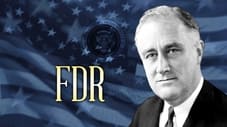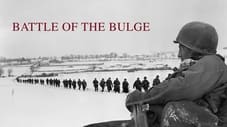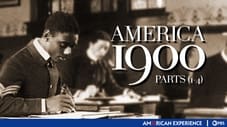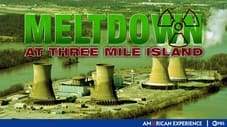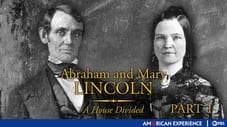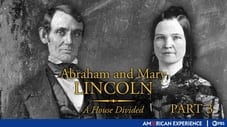David McCullough as Narrator (voice)
Episodes 14
LBJ (1)
LBJ's career started in 1938 when he was elected a congressman, one of the youngest ever. He was elected to the Senate in 1948 under a cloud of suspicion. LBJ won by only 87 votes. In 1954, when the Democrats took over the Senate, LBJ became the youngest majority leader ever at age 46. In 1957, LBJ engineered passage of the first civil rights bill since Reconstruction, but the bill had too many compromises and no teeth. By 1960, LBJ felt he was ready for the presidency, but John Kennedy got there first and then picked LBJ as his vice president.
Read MoreFDR (2): Fear Itself (1922-1933)
In this second episode, the subject is FDR's courageous fight with polio. With his wife Eleanor Roosevelt at his side, FDR, wins the Democratic nomination for president. He takes office at the beginning of the Great Depression. Exhorting the nation to keep the faith, FDR utters his famous words: "The only thing we have to fear is fear itself."
Read MoreD-Day Remembered
It was truly a "battle of the world," a pivotal turning point in history, and the most dramatic single event in WWII. A military operation fraught with incalculable risk; the secret campaign was a triumph of intelligence and teamwork moving 5,000 ships carrying 150,000 men and 30,000 vehicles across one of the most unpredictable and dangerous bodies of water in the world. For all the split-second planning and careful rehearsal, it came down to the young men whose remembrances and recollections are the heart of this story.
Read MoreFDR (1): The Center of the World (1882-1921)
Polio at age 39, president at age 50. Explore the public and private life of a determined man who steered the United States through two monumental crises: the Depression and World War II. FDR served as president longer than any other, and his legacy still shapes our understanding of the role of government and the presidency. A film by award winning filmmaker David Grubin.
This first episode looks at the early life of FDR. Born into a wealthy family, there was little about his youth that would suggest the giant of history that he would become. His entry into state politics and a significant meeting with a woman named Eleanor would change his life and the course of a nation.
Read MoreFDR (3): The Grandest Job in the World (1933-1940)
In episode 3, the subject is FDR's leadership of America during the Great Depression. The nation turned to this son of great wealth for a host of social programs that promised a New Deal for the common man.
Read MoreFDR (4): The Juggler (1940-1945)
The portrait of Franklin Delano Roosevelt concludes with his years as preside (1932 until his death in 1945), how he dealt with the Great Depression, and his link with Winston Churchill during World War II.
Read MoreBattle of the Bulge
The history of World War II's "Battle of the Bulge", when the German army launched a major surprise counteroffensive against the American forces that caught them almost completely off-guard, sweeping away major portions of the front line, pushing deep into the rear areas and causing tens of thousands of casualties before it was finally halted.
Read MoreAmerica 1900
Over one hundred years ago, Americans looked forward to the uncertainty of a new century with a mixture of confidence, optimism and anxiety. Following a range of characters from famous public figures to ordinary citizens, this chronicle of a year in the life of America examines the forces of change that would come to shape the twentieth century.
Read MoreRescue at Sea
On January 23, 1909, two ships -- one carrying Italian immigrants to New York City, the other, American tourists to Europe -- collided in dense fog off Nantucket Island. In a moment, more than 1,500 lives became dependent on a new technology, wireless telegraphy, and on Jack Binns, a twenty-six-year-old wireless operator on board one of the ships. A story of courage, luck, and heroism at sea.
Read MoreMeltdown at Three Mile Island
At 4:00am on March 28, 1979, a reactor at the Three Mile Island nuclear power facility near Harrisburg, Pennsylvania suddenly overheated, releasing radioactive gasses. During the ensuing tension-packed week, scientists scrambled to prevent the nightmare of a meltdown, officials rushed in to calm public fears, and thousands of residents fled to emergency shelters. Equipment failure, human error, and bad luck would conspire to create America's worst nuclear accident.
Read MoreSecrets of a Master Builder
Charting the life on the Mississippi of James B. Eads (1820-1887), "one of the greatest engineering geniuses of all time," says narrator David McCullough. Eads designed, built and financed ironclad river gunships in the Civil War (helping the Union win it, some say), the first steel bridge over the Mississippi, and sandbar-busting jetties at the mouth of the Mississippi that helped ensure the economic viability of New Orleans and the river itself.
Read MoreAbraham and Mary Lincoln: A House Divided, Part I
Part 1 and 2 of a six-part chronicle of the Abraham Lincoln-Mary Todd relationship begins with their childhoods and courtship. He, of course, was born into poverty; she, however, grew up in luxury, the daughter of a Kentucky banker and slave owner. (Several of her brothers would die fighting for the South in the Civil War.) While he was something of a rube when they met, she was the opposite, polished and refined. Yet they shared something in common: a love of politics.
The marriage of Abraham and Mary Todd Lincoln proves to be a tempestuous affair accented by her temper, his depression and their political ambitions. Included: his elections to the U.S. House of Representatives and, later, the presidency.
Read MoreAbraham and Mary Lincoln: A House Divided, Part II
When the Lincolns arrive in Washington, D.C., in 1861, the president-elect is deemed untested and is mistrusted; Mary, meanwhile, is suspected of being a Confederate sympathizer due to being the daughter of a Southern slave owner. As Abraham deals with the national tragedy of the Civil War, the couple also face a tragedy much closer to home: the 1862 death of their son Willie. The aftermath of son Willie's death finds Mary turning to spiritualists for comfort and, perhaps, slipping from sanity. President Lincoln, however, has another matter larger than his own grief that demands attention---the war. Included: the step he took that changed the nature of the conflict, the Emancipation Proclamation, which he issued on Jan. 1, 1863.
Read MoreAbraham and Mary Lincoln: A House Divided, Part III
The third part recalls 1863, when opposition to the Civil War spread among Northerners: some see the high level of casualties as unacceptable, while others resent fighting to free black slaves. Abraham Lincoln, understandably, becomes anxious. Mary Todd Lincoln, meanwhile, copes by spending money compulsively, and falls into debt as a result. Conclusion. The final 16 months of the Civil War are charted, including the battle at Gettysburg and Abraham Lincoln's battlefield dedication and, just days after the South's surrender at Appomattox, his assassination. Included: Abraham's dedication to bringing the South into the Union; Mary's private wish for revenge.
Read More

